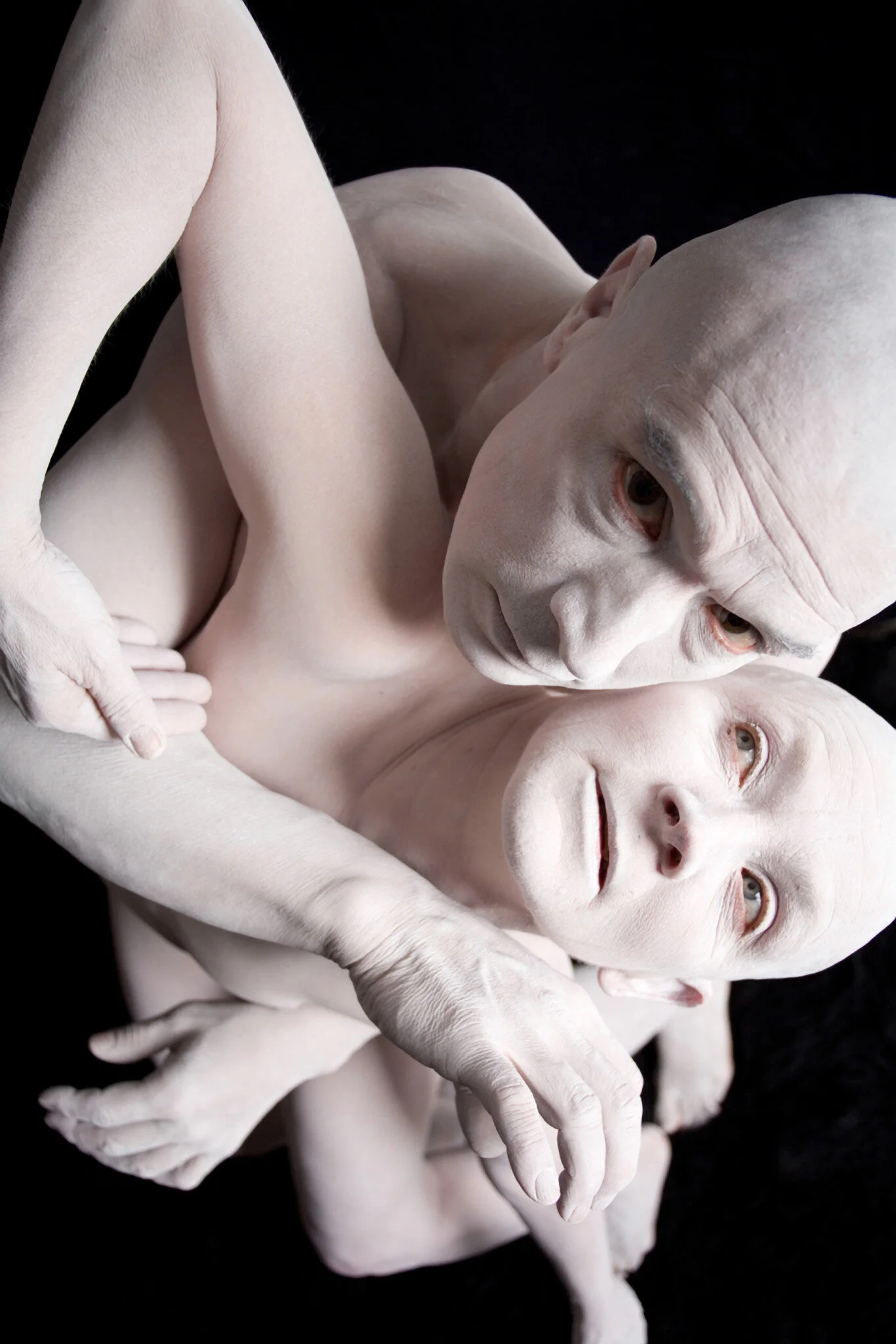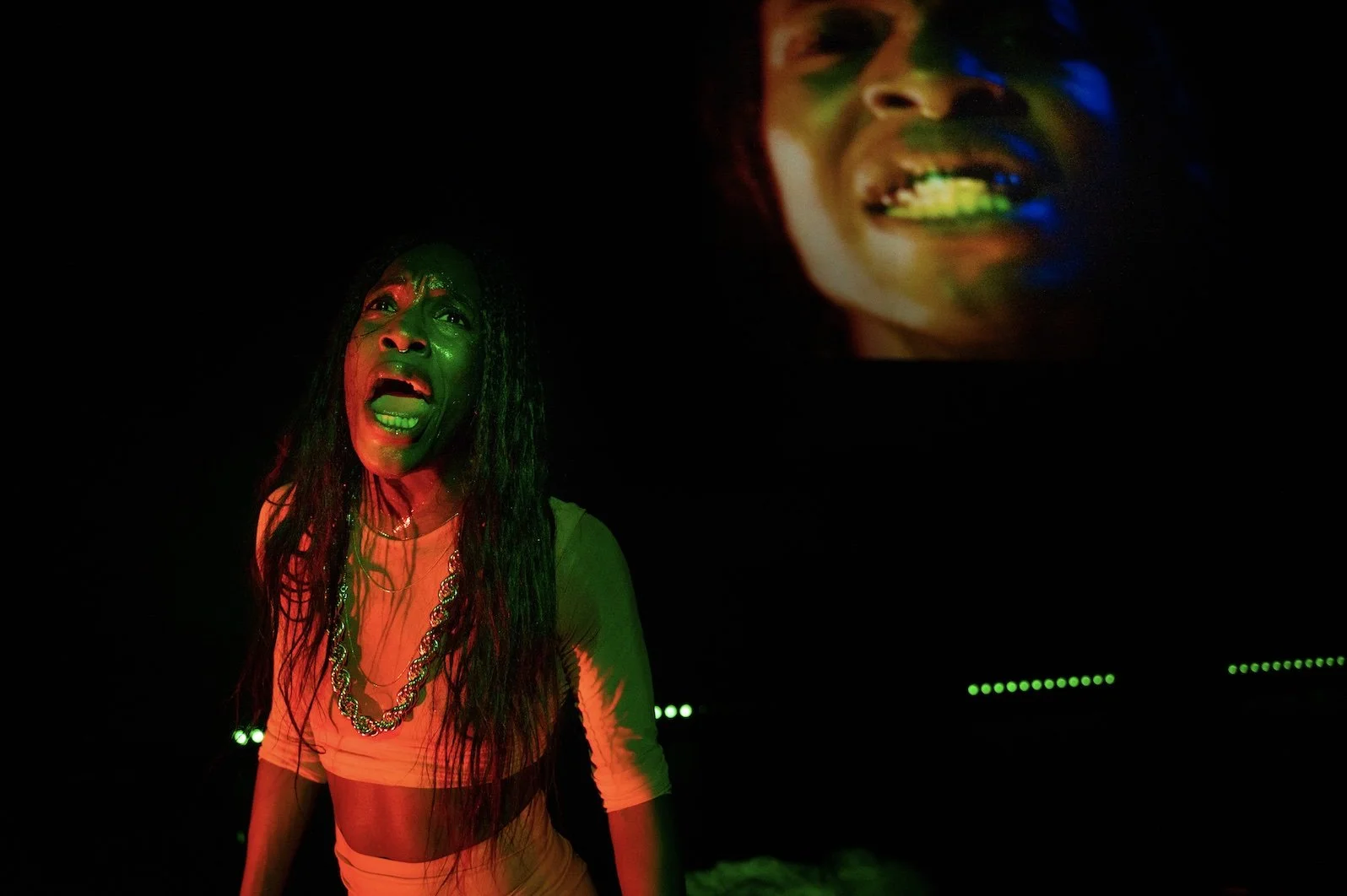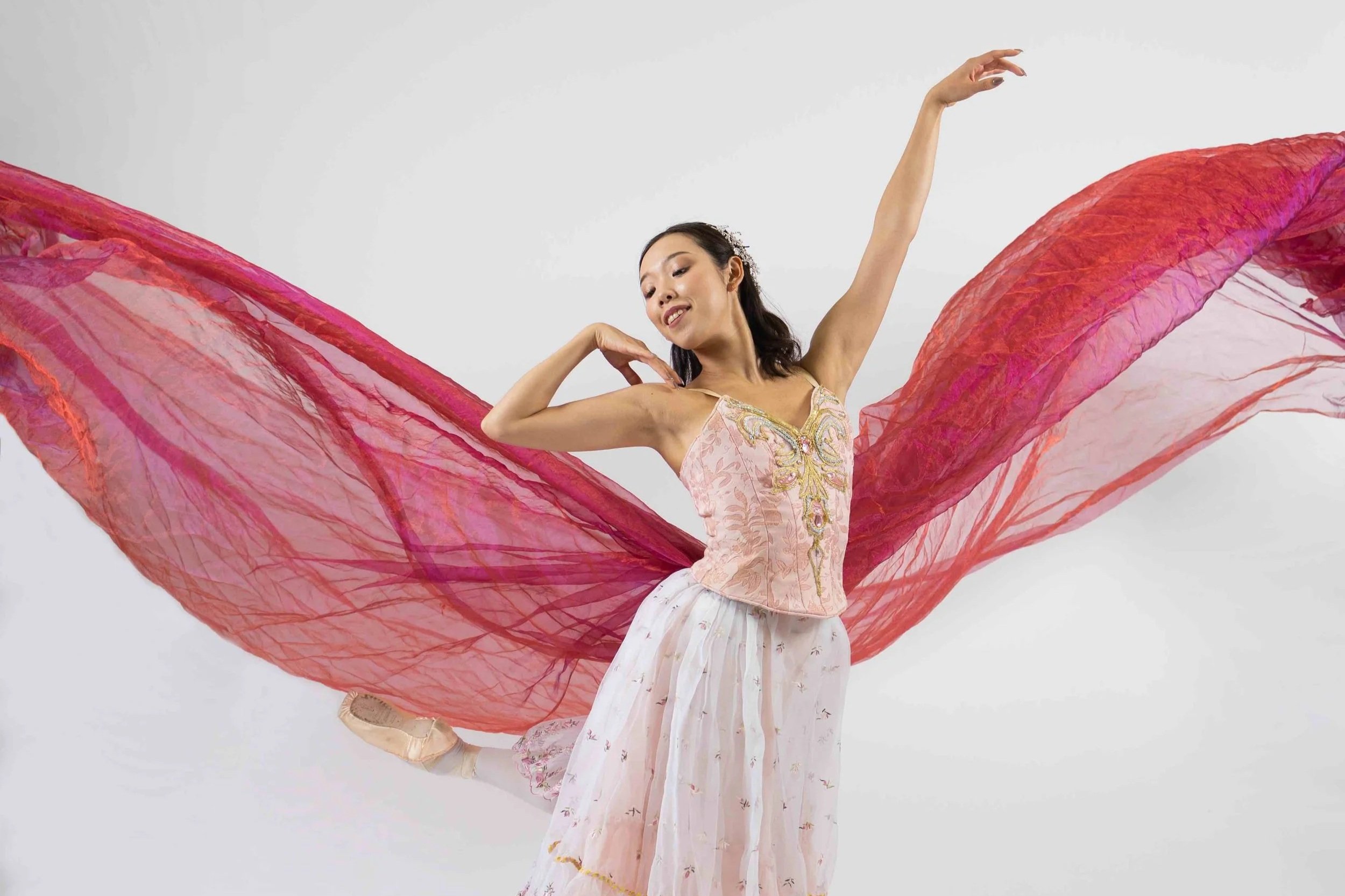Zen philosophy permeates Kokoro Dance's new duet
Vancouver butoh artists Barbara Bourget and Jay Hirabayashi contemplate transience and imperfection in Wabi-Sabi
Jay Hirabayashi (left) and Barbara Bourget. Photo by Peter Eastwood
Kokoro Dance presents Wabi-Sabi at the Roundhouse Performance Centre September 22 to 25 and 29 to October 2, 2021 at 8 pm PDT.
OVER THE COURSE of their remarkable careers, Kokoro Dance co-founders Barbara Bourget and Jay Hirabayashi have produced more than 200 works in their exquisite brand of butoh, haunting and serene. The upcoming presentation of their new duet, Wabi-Sabi, will be a momentous occasion: it will be the first time the partners in art, work, and life will have performed together, just the two of them, in 42 years to music composed by their son, Jo Hirabayashi.
The reason for the return to intimate one-on-one work?
“COVID,” Bourget tells Stir in a Zoom interview.
When the pandemic shut the world down last spring, the artists were in the midst of the Vancouver International Dance Festival, which they co-produce, and had to cancel so many shows. While the global health crisis put a pause on touring and group work, the veteran artists weren’t about to stop dancing themselves.
And while the explanation for the couple’s shift away from ensemble pieces that have earned Kokoro critical acclaim is simple, the inspiration behind their new work goes much deeper.
As Hirabayashi explains, Kokoro Dance’s butoh expression gives recurring attention to the seven aesthetic principles of Zen philosophy: kanso, or simplicity; fukinsei, meaning asymmetry or irregularity; shibumi, beauty in the understated; shizen, naturalness without pretense; yugen, subtle grace; datsuzoku, freeness; and seijaku, or tranquility.
“These terms are encompassed in a world view that the Japanese call wabi sabi, the acceptance of transience and imperfection,” Hirabayashi says.
The metaphysical basis of the wabi-sabi universe holds that things are either devolving toward or evolving from nothingness.
Quoting from the book Wabi-Sabi — for Artists, Designers, Poets & Philosophers by artist-writer-architect Leonard Koren, Hirabayashi notes that the philosophy’s spiritual values consist of three main principles: Truth comes from the observation of nature; “greatness” exists in the inconspicuous and overlooked details; and beauty can be coaxed out of ugliness.
The wabi-sabi state of mind is one of acceptance of the inevitable and the appreciation of cosmic order.
“Butoh, I think, largely embraces all of those qualities,” Hirabayashi says, “and it’s why people in Western cultures initially have a lot of difficulty with butoh. It doesn’t embrace the same ideals as the Greek understanding of beauty, where that perfection interest of ballet is rooted more in symmetry and not irregularity. There are many things that challenge the Western ideals of existence; in Japan, partly because of the country is bombarded with earthquakes, tidal waves, and rain, it has affected their world view: things are constantly crumbling and falling having to be rebuilt.”
Wabi-Sabi, the duet, Bourget says, is “a celebration of all things wrinkled… The beauty in the tea ceremony, in the cracked china and the things that have been used”.
Bourget is 71 in October, and Hirabayashi is 74; they are grandparents, and both have had joints replaced.
“Increasingly as we have aged, we’ve come more and more cantankerous but also cognizant of death,” Bourget says. “The end of our life is much closer than before. It has to do with the celebration of the aging body.”
“The key part of my process in life has been to move,” she says. “To move is essential to any quality of life, and to express something deep through physical language is something I’ve worked with all my life. When you see a fantastic performer, it touches you, it changes you in some way. It was like that when we saw our very first butoh performance.”
That performance was by Harupin-Ha, proving so moving to Bourget and Hirabayashi that they formed Kokoro Dance a few years later, in 1986.
Characterized by slow, meditative, sculptural movements, butoh has its origins in post-World War II, when dancers Tatsumi Hijikata and Kazuo Ohno set out to explore dance at a raw, primal level.
Ohno is a key inspiration for the couple, who studied with the master in 1995—when he was 88. He died at 103 and gave his last performance at 100. “He had had a stroke and could only move his right arm,” Hirabayashi says. “The performance was very moving. They carried him out in a chair and put him down in the middle of the performance area. He sat there for a while, then lifted his hand and grabbed at something.
“It was not the doing but what you reflect on upon watching someone sit very still or move very slowly,” he says. “That metaphor of grabbing at life was really strong.”
Bourget adds: “People wept.”
During their years of researching and performing butoh, the two have found that it’s largely the degree to which they can become completely focused on their bodies—be present in their movement and allow their bodies to speak in the most articulate way possible—that is the degree to which audiences respond.
Bourget remembers an especially powerful moment from their 2003 piece called ( ). Set to music by Sigur Ros, it was about the unspeakable and the invisible, life and death, departure and loss, love and resurrection—and about the spaces in between.
For six and a half minutes in that work, she stood perfectly still. During that time, she thought about everyone in her life and everyone she has lost. An audience member approached her after the show, and said that even though she wasn’t physically doing anything, he couldn’t take his eyes off her. “He thought I had been standing still for 20 minutes,” she says. “He was so moved. In that way, we changed and stretched time.”
Butoh’s deliberate stillness and slowness are in stark contrast to so much swiftness in other dance realms.
“A lot of movement today is still so complex and fast—there’s a lot of attention to virtuosity, skills, how flexible you are, how fast you can move…” Hirabayashi says. “It’s extraordinary to watch but it is also so dense for us that often it seems that we don’t really understand it because it doesn’t really allow time until piece is over to reflect on what you’ve seen. It’s changing so fast you can’t take it in. We’ve always had in our work that sense of space and time and have tried to alter our audiences’ perception of what space and time is by changing our own interior sense of time and space.”
Barbara Bourget (left) and Jay Hirabayashi launched Koikoro Dance in 1986,
Audiences for Wabi-Sabi can expect a performance lasting approximately an hour, but no two evenings will be the same. Much of the choreography will be improvised. Bourget and Hirabayashi are accustomed to this approach, having collaborated frequently over the years with jazz musicians. It features lighting by long-time collaborator Gerald King; having worked with Kokoro for over 35 years, he’s like family.
Wabi-Sabi is very much a family affair, with an original score composed by the couple’s son, Jo Hirabayashi. He’s recording the music with local string players Meredith Bates, Peggy Lee, and James Meger.
“It’s split into three sections: Mom, Dad, and all the other things,” Jo Hirabayashi tells Stir.
With the pandemic decimating the music industry, the younger Hirabayashi admits things have been challenging for him as musician; working on Wabi-Sabi, however, has been a boost.
“This piece has been a pleasure to work on as it has felt more rewarding the way I’ve approached this process: things are very precious and I’m working very quickly and intuitively,” he says.
Also informing their new work are literary sources like Koren’s aforementioned book as well as its sequel, Wabi-Sabi — Further Thoughts; Junichiro Tanizaki’s In Praise of Shadows; Okakura Kakuzo’s The Book of Tea; and Shunryu Suzuki’s Zen Mind, Beginner's Mind and Not Always So.
Another source of inspiration for Wabi-Sabi was the couple’s recent trip to Tofino and Ucluelet, their first. They went on the Rainforest Trail and were struck by the sight of ancient cedar trees—another reminder of the beauty and power of nature and of aging.
“I appreciate the energy of youth, but I can’t be around them very much—it’s exhausting,” she says. “One of the things about youthful exuberance is that watching it reminds you of your own youth. I’m not jealous, but at age 71, I cannot dance like a 20-year-old. I had to let that go… I have to leave that behind and bring forward what I can and hopefully still grow as an artist. I don’t want to stagnate.”
That trip to Pacific Rim National Park affected Hirabayashi too, reminding that everything is in a constant process of decay, death, and rebirth—plants, animals, and people—something that influences his outlook on art and life.
“There’s no end to practising butoh;” he says. “It’s is a process that doesn’t end. Nothing is permanent.
“Human beings try to pretend they will live forever,” he says. “Of those that do embrace their finiteness, many tend to really enjoy to the max they can every moment that they’re alive.”
For more information, see Kokoro Dance.














